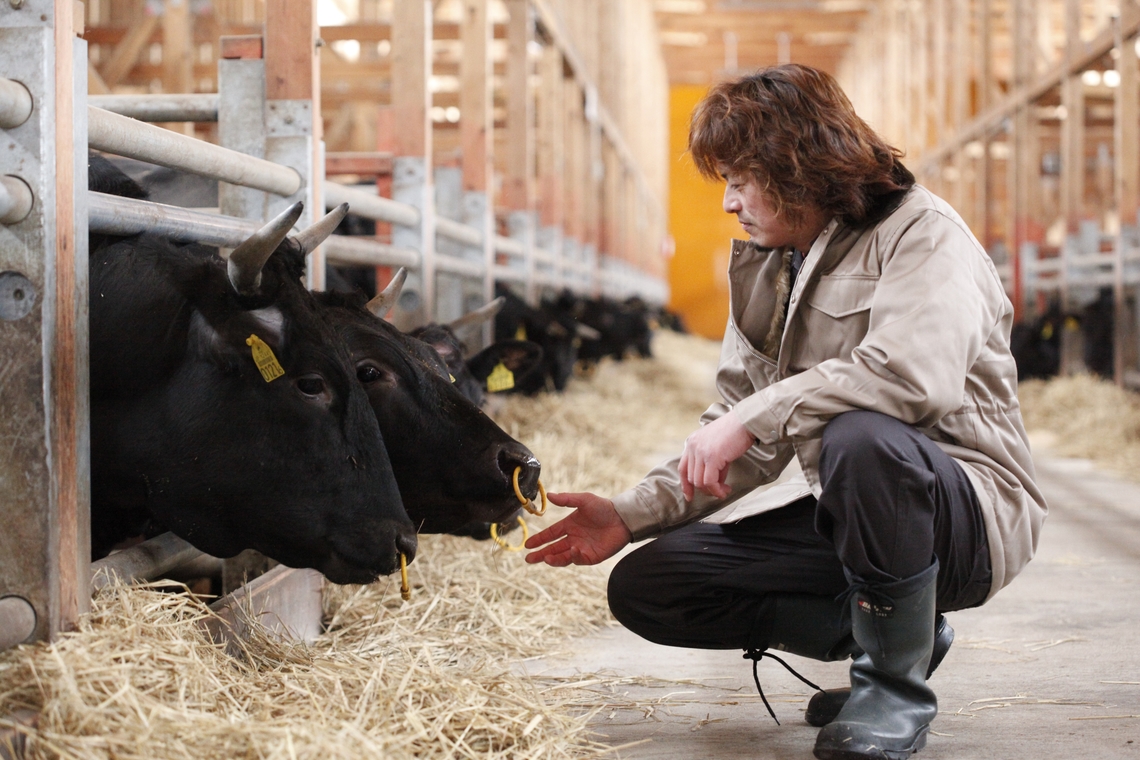"Livestock farmers can't even go on trips because they have to tend to the cattle every single day," the young man who took over the third generation laughed.
When I sampled that Wagyu beef (though honestly, I'm not a gourmet sophisticated enough to discern strict differences), the fat was indeed light and smooth, and the meat had a pleasantly crisp, tender texture.
This is the story of when we were approached by Obana City in Yamagata Prefecture with the idea: "We want to create a regional brand for black-haired Wagyu."

Typically, Wagyu brand names follow the structure of "region + cattle." However, within the pyramid where Kobe beef and Matsusaka beef reign supreme, "Obanazawa beef" struggles to stand out. And no wonder. They talk about the Magic Number 7±2 (※1), but even for Japanese people who love Wagyu, there are already far too many brands out there to remember – Maezawa Beef, Sendai Beef, Yonezawa Beef, Tajima Beef, Miyazaki Beef, and so on.
I realized that creating a new brand required a fresh perspective.
It was then that Mr. Takahashi from Yamagata JA Michinoku Murayama posed this question: "Do you perhaps think A5 pink-fleshed black Japanese beef is the most delicious?"
Huh! Is that not the case?
According to Mr. Takahashi, whether it's A, B, or C is about the amount of meat on the carcass. It's a standard used by meat market professionals to measure how much meat can be obtained from a single animal during transactions. But once the meat is sliced, that's not really relevant to the average consumer, right?
And the ratings from 1 to 5 are based on the ranks of "marbling," "meat color," "firmness and texture," and "fat color and quality" – all determined by "appearance."
You might see signs advertising "Premium A5-grade Japanese Black Beef" on street corners, but apparently, some B2 beef tastes better than A5 when you actually eat it.
For instance, professional evaluators look at whether the cattle are "castrated (male)," "previously pregnant," or "never-pregnant (female)." Even within the same A5 grade, never-pregnant females, known for their tender meat, command much higher wholesale prices than castrated males.

Take "pedigree," for instance. Only Kuchinoshima cattle from Kagoshima Prefecture and Mishima cattle from Yamaguchi Prefecture are said to preserve the lineage of native breeds, untouched by Western influences. Years of selective breeding have established the genes responsible for superior meat quality, and market professionals meticulously check for them.
For instance, "meat color." Healthy Kuroge Wagyu cattle often have that characteristic reddish-brown hue typical of beef.
It seems consumers either don't truly know what delicious Wagyu is, or at least have misconceptions about it.
(To be continued)
※1 A discovery by American psychologist George Miller. It demonstrated that the capacity of short-term memory is 7±2 (meaning we can only remember around 7 items for everyday tasks).






